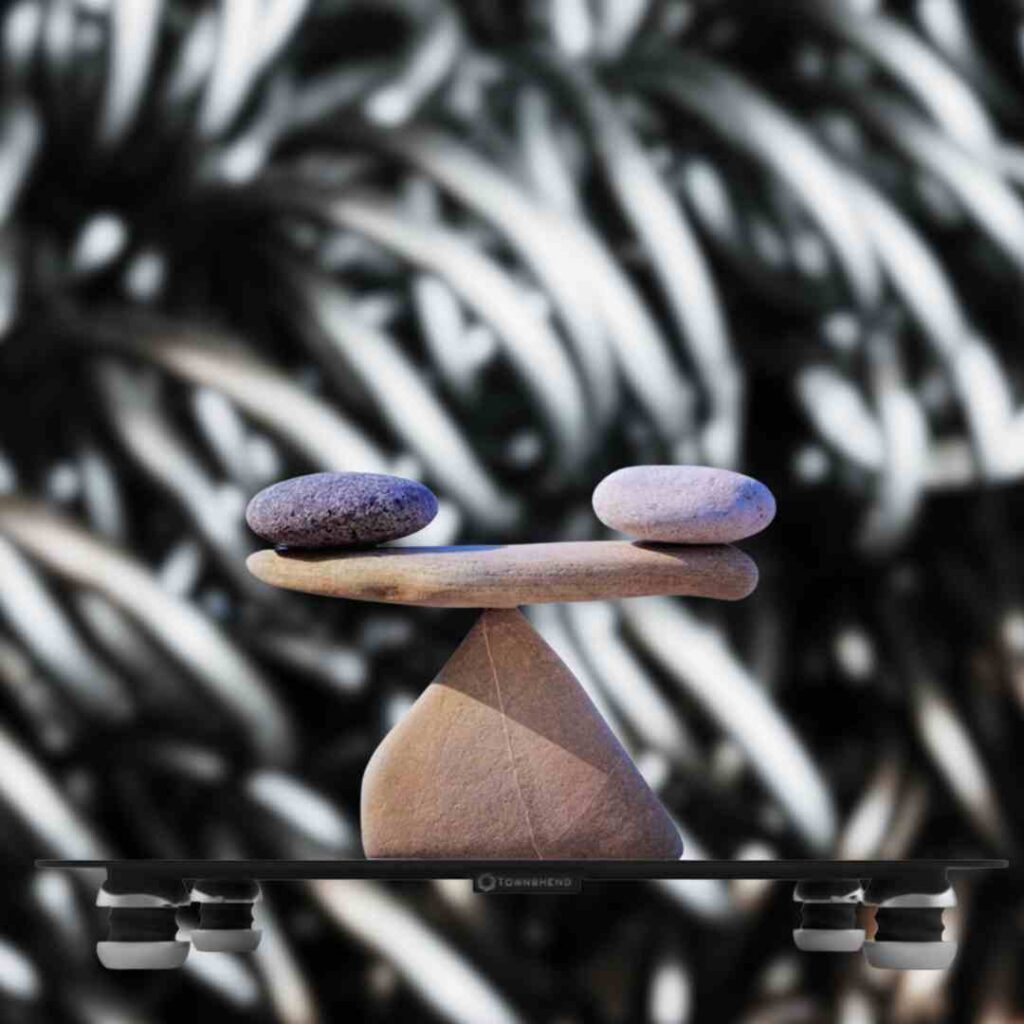Jack Dinsdale professor of Mechatronics engineering also called mechatronics, is an interdisciplinary branch of engineering that focuses on the integration of mechanical, electrical and electronic engineering systems, and also includes a combination of robotics, electronics, computer science, telecommunications, systems, control, and product engineering.


The Theory of More Stuff.
Vibration isolation in audio is a subject surrounded in mystery half truths and any number of wild theories. As an engineering exercise, the explanation is quite straight foreword and may be explained by the “Theory of more Stuff”.
Take a surface, be it the floor or a table, on which your hi fi component is placed and it is desired to reduce the vibration from the support to the equipment. The way this is done is to put “some stuff” between the equipment and the supporting surface. There are three possible outcomes.
- The vibration in the equipment is more than the vibration in the support. If this were the case; then the energy crisis would have been solved! Something for nothing! More out than went in! Free power forever! Sorry, not possible.
- The vibration in the supported equipment will be the same as in the case of no stuff. The chances of this are one in a million because something has been changed, therefore, the only possibility is that:
- The vibration in the equipment is less than the vibration in the support, which, indeed, is the case.
In the case of Hi Fi, there are many products (stuff) on sale that does attenuate vibration. Be it spikes on glass, wood and slate, aluminium spikes in cups, ball bearings in cups, solid plates separated by compliant sheets, lead, Bluetack, sand, marble, concrete – the list is endless. It is also known that by stacking more stuff a better result may be obtained.
The intelligent approach is to optimise the stuff and you will no doubt not be surprised to learn that that the Victorian engineers came up with the solution -. the spring! The spring may be anything “springy”, from elastic, rubber, coiled steel, straight steel, air-bladders to flexible wooden strips – as long as it has sufficient spring, or compliance, to realise a mechanical low pass filter. i.e. a system that holds the equipment up against the force of gravity, but does not allow deleterious vibration to pass through.
Any spring mass system will oscillate at its resonant frequency. At frequencies below resonance, vibration will pass through. At resonance, vibration will be increased and at frequencies above this, vibration will be attenuated. Therefore, it is desirable to have the resonant frequency as low as possible to block as much vibration as possible. Ideally, for audio, this should be about 2Hz in both the horizontal and vertical planes and with a damping ratio of about 0.16. This will give an attenuation of about 25dB at 10 Hz increasing at 20dB per decade above. This will ensure excellent isolation for the deleterious audio system vibrations, which range from 5Hz to 500Hz.
The Townshend Audio range of Seismic Isolation isolation products exhibit a resonant frequency of about 3Hz in all planes, which is quite user friendly and can be realised in attractive practical reliable maintenance-free objects of great beauty and bling.
There are many products out there that do in fact attenuate vibration. Be it spikes on glass, wood and slate, aluminium spikes in cups, ball bearings in cups, solid plates separated by compliant sheets, lead, Bluetack, sand, marble, concrete, the list is endless. It is also known that multiple combinations of the above produce better results because there is more stuff. Eg. multiple stacked platforms.
The engineering approach is to get the best result in the simplest manner by
optimizing the “stuff” and way back about two centuries ago the Victorian engineers came up with the solution…. the spring! The spring may be anything “springy”, from elastic, rubber, coiled steel, straight steel, air-bladders to flexible wooden strips, with the best being the music wire spring.. If it has sufficient spring or compliance, when optimised with an appropriate mass, a mechanical low pass filter is realised.The ideal is to have the resonant frequency as low as is possible, ideally around 2Hz in both the horizontal and vertical planes and with a damping ratio of about 0.16. This will give an attenuation of about 25dB at 10 Hz increasing at 20dB per decade above.
This will ensure excellent isolation for the deleterious audio system vibrations which are from 5Hz to 500Hz.
